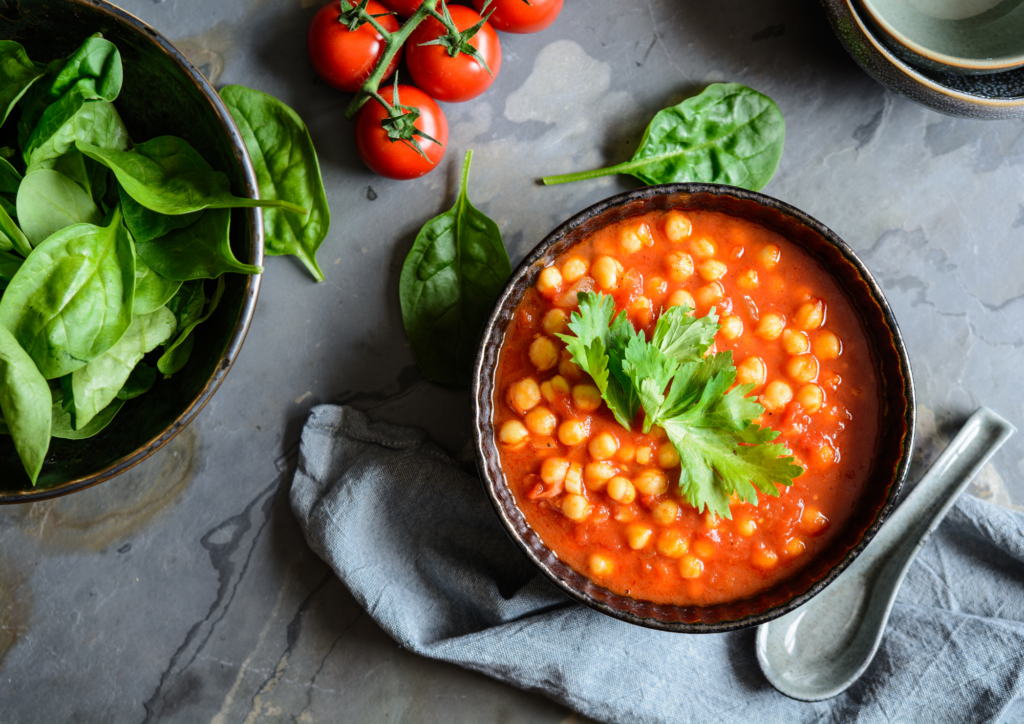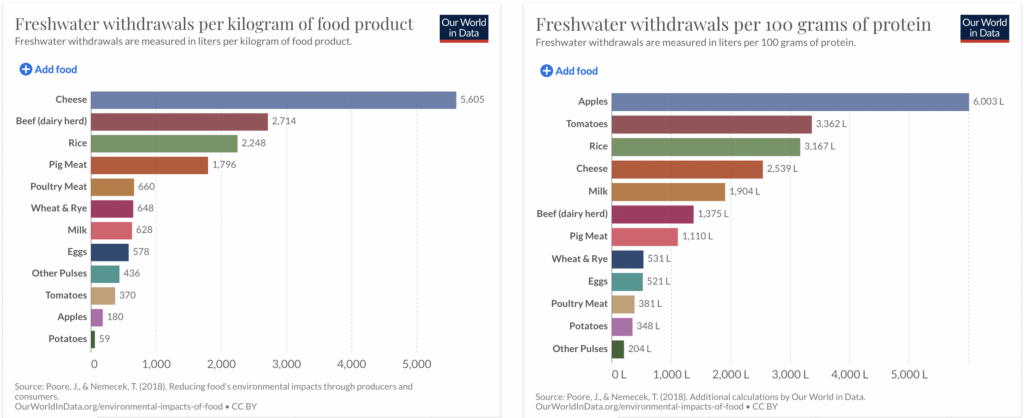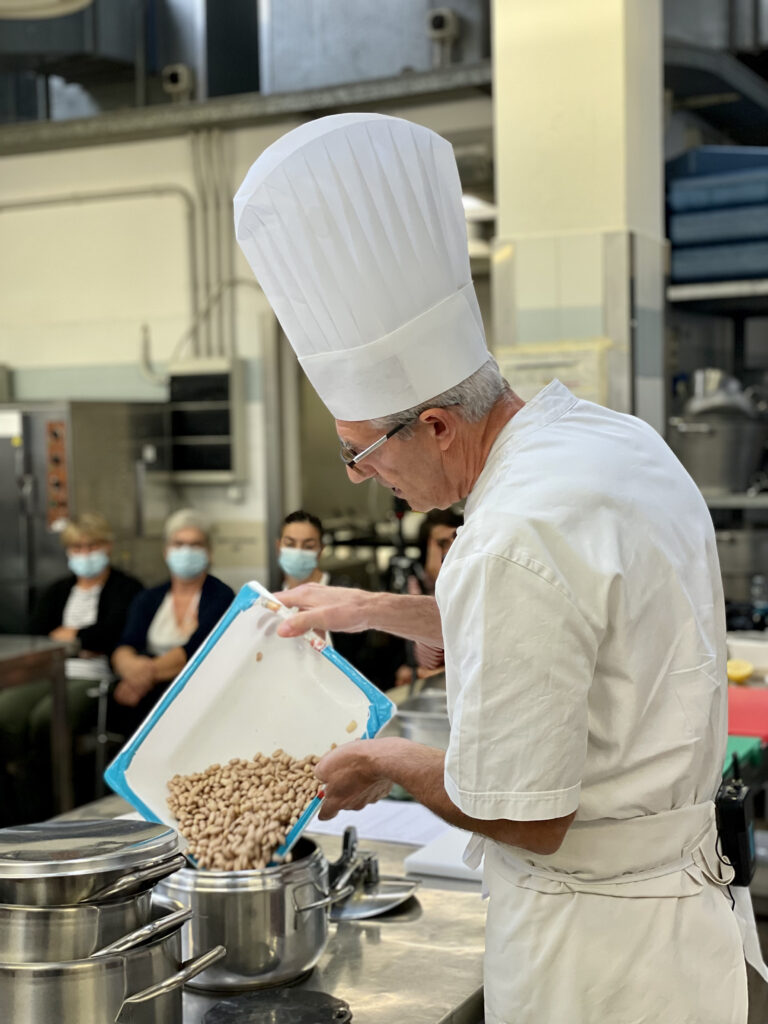Chickpeas are one of those resources that, at least until recent times, have never been given their due credit. A versatile and iconic food in countless cuisines, today it is one of the bastions of sustainability and food security. The time has come to give chickpeas their due, celebrating their flavour, history and benefits for us and the environment.
Chickpea soup, chickpea falafel, chickpea velouté, chickpea pasta, chickpea hummus, chickpea salad. These little leguminous friends are perfect for all combinations and all seasons. Boiled, sautéed, stewed, chopped, steamed and even roasted and fried, chickpeas are a truly versatile food and the custodian of an invaluable gastronomic and cultural heritage.

Chickpeas in history
We can first say that chickpeas as we know them today (Cicer arietinum) were born as early as 7000 BC, in Anatolia, a region corresponding to present-day Turkey. Easy to grow and rich in nutrients, they were soon exported throughout the Mediterranean region and, a few millennia later, landed in India, the main modern producer.

Over the course of time, chickpeas have undergone alternating fortunes, sometimes assuming curious functions. From its ritual use among the Ancients, to its use as a strategic weapon during the thirteenth-century revolts of the Sicilian Vespers (it is said that the Sicilians, in order to spot French invaders camouflaging themselves among the populace, showed them chickpeas and asked them to pronounce their names, so that they were betrayed by their French pronunciation), to their use as a do-it-yourself solution in ship maintenance (they were used to replace nails blown out of the hull, since once in contact with water the chickpeas swelled, closing the leaks).
Leaving aside, however, the extraordinary adaptive capacity of chickpeas and focusing more specifically on today, one cannot fail to emphasise that the last two decades have seen an exponential increase in demand and supply of chickpeas, precisely because of their exceptional nutritional and environmental characteristics.
Chickpeas and health
The nutritional benefits of chickpeas are numerous; rich in fibre and protein, vitamins and minerals, they are low in fat and also help keep cholesterol and blood sugar levels under control, making them valuable allies in a healthy, balanced diet.
Not to mention that precisely because of their high nutritional content, legumes can contribute significantly to addressing global issues that also directly affect us, such as hunger, malnutrition, but also anaemia and obesity. Furthermore, chickpeas are naturally gluten-free, making them perfect for the diet of people with gluten intolerance or sensitivity.

Last but not least, it is good to know that in ancient times, apart from being used to avoid shipwrecks, it was an established belief that chickpeas were a food with aphrodisiac virtues.
Chickpeas and the environment
But the benefits certainly do not end there.
Chickpea production allows the use of a limited amount of natural resources while, at the same time, making food production more sustainable.
Suffice it to say that producing a kilo of chickpeas requires less than 400 litres of water (200 litres/100g protein), compared to almost 1,800 litres for a kilo of pork (1,110 litres/100g protein), over 2,700 litres for a kilo of red meat (1,375 litres/100g protein) and 5,600 litres for a kilo of cheese (2,539 litres/100g protein). The reduced water footprint makes legume production a smart choice in arid areas and drought-prone regions, such as Italy. Also from the point of view of carbon footprint and land consumption, chickpeas, like all legumes, win the sustainability challenge over meat and meat products.

While they need relatively little to grow, they also actively contribute to improving soil quality. In fact, chickpeas, like all legumes, are known for their ability to fix atmospheric nitrogen, making soils more fertile and reducing the need for industrial fertilisers and the resulting greenhouse gas emissions.
In Europe, where fertiliser consumption is relatively high by international standards, alternating legumes with cereal crops would avoid the use of 88 kg of nitrogen per hectare. It would also help reduce soil erosion and keep pests and diseases under control.
By improving the quality of the soil, chickpeas promote biodiversity, in addition to already being an important source of biodiversity due to their great genetic variability. White, black, red; from Orco Feligno, Pergentino, Capitignano, Navelli, Murgia Carsica, Cassano, Teano, are just some of the countless varieties that make up the large chickpea species. This gives them great potential for climatic adaptation, allowing the selection of the most suitable varieties for the most varied climatic conditions.
Food Policy of Bergamo: chickpeas on the plate
A healthy and sustainable diet is the first step to guarantee our children and the planet the well-being they deserve. Within the framework of the H2020 Food Trails project, Bergamo Food Policy, in cooperation with the school catering company SerCar and a large group of experts in vegetable cooking and child nutrition, has launched a series of initiatives to introduce more chickpea-based dishes in the menus of Bergamo schools.
The key objective is to improve children’s eating styles and, at the same time, act on food systems to improve what is produced, how it is produced. To make it meaningful, this work will also involve the canteen committees, pupils, teachers and families, in order to design the recipes, so that our children can eat well, without forgetting the taste and ancient Mediterranean traditions.
Good chickpeas to us, good chickpeas to all.


